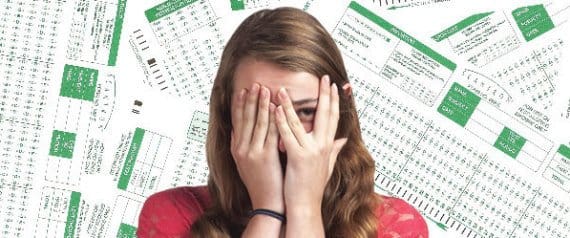
All About ISEE Accommodations
In order to allow all students access to the ISEE test, the Educational Records Bureau (ERB) does provide accommodations for students who qualify. The path for students to qualify for testing accommodations is sometime hard to navigate, so it’s good to know what the process looks like before hand. We have outlined below the nuts and bolts of applying for and receiving accommodations. (Disclaimer: this is for informational purposes only. This is in no way a formal recommendation.)
Timeline
Enrolling for the ISEE takes a bit longer because the ERB board will need to verify both with you and your home school that your child currently receives accommodations. Before you can enroll for a test date, you need to receive approval for accommodations. This means providing an IEP or other documentation from the school before you can enroll in a test date. In years past, you could enroll in a date then request accommodations. Receiving approval can take up to five weeks, so it is important to get the process started soon in order to register for a timely test date.
Accommodations Criteria
There are three criteria to be eligible for accommodations:
- having a learning difference or disability that requires accommodations
- having documentation that establishes that need
- currently receiving accommodations at school for that learning difference
On the registration form, you will fill out a portion of the form and send it in, but the home school will also have a portion of the form to fill out and mail in. The student’s current school must verify that the accommodations requested are currently being used in classroom and testing situations. The school should initial the list of accommodations the student requires. If the student’s needs are not listed, then check “other” and explain on the lines provided. If for some reason the student does not currently receive the accommodations requested in the current school setting, this should also be explained (such as the school already incorporating an adapted curriculum).
Required Documentation
To be approved for accommodations, you will need to provide one or more of the following:
- Formal Testing – a complete psycho-educational evaluation dated within the last three years
- An Individualized Educational Plan (IEP) or 504 Plan from the current calendar year
- A School Accommodation Plan from the current calendar year.
- Physician Letter – a letter from a medical doctor is required if the accommodations are due to a medically-treated issue (such as a vision impairment, deafness, paralysis, ADD, ADHD [treated with prescriptions], etc.) or a physical disability.
Approval
You are more likely to be approved for accommodations that you are currently receiving through your current school. Whatever your child receives on a regular basis through standardized testing or classroom testing should be granted fairly simply. Anything beyond current accommodations they receive takes more time.
Once your child receives approval for accommodations, that approval lasts 15 months, so you won’t need to re-apply for accommodations if you opt to have your child take the test twice. If your accommodations are denied, appeals can be emailed to the ERB at iseeaccommodations@erblearn.org for further consideration.
Types of Accommodations
- Extended Time: The most common accommodation on the ISEE is extended time: time and a half for taking the test. This generally means that students have the advantage of more time per question, but the strategies they need for stamina are also different because the test will be longer.
- Large Print or Braille Test: Students who are visually impaired or who have visual processing issues can request a large print or braille test. Some students may also qualify for a reader.
- Circle in Booklet: Students with dysgraphia or mild-moderate palsy might get approval for circling the answers in the booklet rather than transferring their answers to a bubble sheet for paper tests.
- Typed Essay / Typed Essay with Spell Check: Students may be able to type their essay or type their essay on a computer with spell check. Any students who take their test at a Prometric center will obviously also be typing their essays, too.
- Calculator: Students are allowed to take a basic calculator into the ISEE. No graphing calculators are allowed, however.
- Distraction Free Rooms: Less commonly approved, students can test in a room by themselves with the proctor.
Which testing sites offer accommodations?
All Prometric centers offer extended time as an option. Most school sites also offer extended time, but only on specific days. Select school sites will offer the test with extended time (usually 1.5), but accommodations beyond extra time need to receive special arrangements with the proctor and test location.
If your child qualifies for a specific accommodation or combination thereof that is not offered at any of the sites listed, you will need to make arrangements to have a specially proctored test at one of the schools to which your child is applying.
Will the testing accommodations be visible on the score report?
No. Any type of accommodation that your child receives on the ISEE will not be visible on the ISEE score report that is sent to the schools. The typed essay used to be an indicator of testing with accommodations several years ago, but now that students are taking the tests at Prometric centers more often, typed essays are more common.
If you feel that you cannot disclose your child’s needs to a prospective school, it is possible that the school is not the best fit for your family.
For more information on children with special needs who are in a test-taking environment, please visit the ADA’s website: https://www.ada.gov/regs2014/testing_accommodations.html
